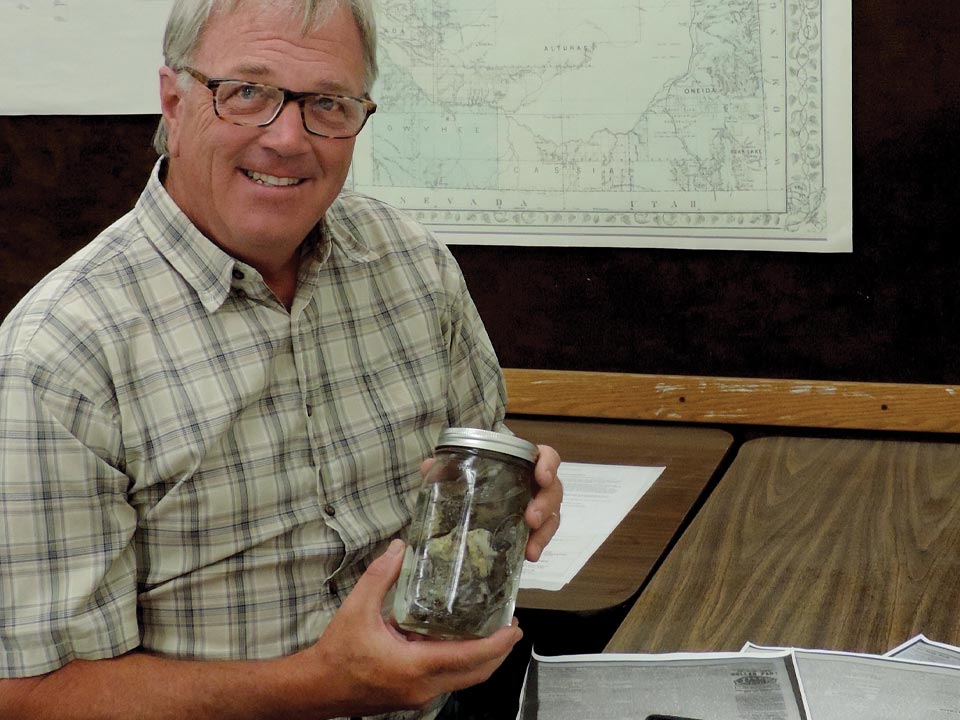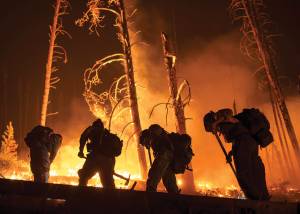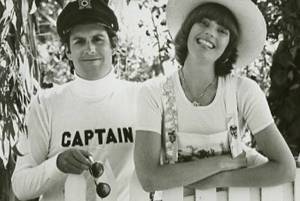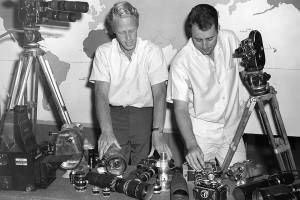By DIANNA TROYER
Darr Moon grew up shoveling gold into a sluice box in mountainous central Idaho. At 61, he is still prospecting for gold on patented mining claims his father purchased decades ago when gold sold for $35 an ounce. Today, an ounce of gold is hovering around $2,000 an ounce.
“Mining gold is still my healthy bad habit,” said Moon, whose day job as an engineer and surveyor in southeastern Idaho supports his mining habit. “I never outgrew the pull of gold. It’s a treasure hunt.”
Moon juggles his time between two offices—his engineering firm on the square in Rupert and his outdoor office at 9,500 feet, where he and his family mine in the historic Yankee Fork Mining District about 20 miles northeast of Stanley. Home to some of Idaho’s richest gold and silver deposits in the late 1800s, the area still yields flakes, nuggets, and small gold veins.
Moon keeps small gold samples for his mineral collection and sells gold flakes in vials—about 1/10th of a gram of gold—to the Yankee Fork Gold Dredge Mining Museum and the Custer Museum in the old ghost town of Custer.
According to Moon, many people fail to realize how modern civilization is dependent on gold and other metals.
“Think about your phone or any electronic device for that matter. It has gold, copper, and silver in it that came from a mine somewhere. Electrical contacts are made from gold because it’s such a good conductor and resists corrosion. Most people don’t even realize that. We definitely live in a metal-dependent world.”
Moon and his family marvel that gold prices began soaring to historic highs in late summer. Investors worldwide turned to gold as a safe-haven asset and a stable investment amidst financial uncertainty and turbulence due to the coronavirus pandemic’s impact on countries’ economies.
“Historically, people have always turned to gold for stability in times of crisis,” Moon said. “Dad and I both caught gold fever, fortunately. As engineers, we’ve both made a good living, so we didn’t need to strike it rich with gold.”
His father, Durell, who lives in Heyburn, joked that he “kept his gold in the bank; unfortunately, a gravel bank—and one that’s hard to make withdrawls.”
Growing up, he’d heard stories from old-timer miners.
“I admired their knowledge of local geology and how independent and self-sufficient they were, especially during winter when it can be minus 60,” Moon said.
Eventually, Durell bought land that was once part of the General Custer, Lucky Boy, and Montana mines.
Moon, his wife, Dorothy, and their sons, Dane and Parker, continue the family tradition.
“When we work the land, we think about how we’re walking in the footsteps of those miners who came before us and what they overcame to make a living,” Moon said.
In the winter when he can’t mine, Moon said he “mines libraries and the old newspapers for local history.”
His most exciting find is the journal of Colonel William Birelie Hyde, an engineer who built the Custer Mine and mill. He used it to track down Hyde’s family in California.
“I’m piecing together a glorious history of the area through his eyes,” Moon said.
During its first year of operation in 1880, the Custer Mine produced $1 million worth of gold and silver when gold was worth $20 an ounce. The metals were melted into bars that were 8 inches wide and 24 inches long. Each one was 80-percent gold and 20-percent silver
“That spring of 1880, the roads were impassable due to snow and mud,” Moon said. “Hyde piled up the bars in his office until he had an 8-foot-tall stack by the time the roads opened, and they could be hauled away.”
The Moons have no plans to develop a commercial mine. Instead, they allow friends to pan for gold on their claims on Jordan Creek.
“People naturally like rocks, especially if they’re gold,” Moon said, smiling. “We welcome people who want to pan and find some color. A lot of the big nuggets that were found historically came from Jordan Creek.”
To showcase Idaho’s mining heritage, and to share an appreciation of the scenic pine-scented forests surrounding them, Moon plans to build a couple of rental cabins on their property in the coming years.
He said he hopes those who rent the cabins will see for themselves the grandeur around them. “They can learn, first-hand, what the early prospectors and miners did and how they lived—and that’s priceless.” ISI










